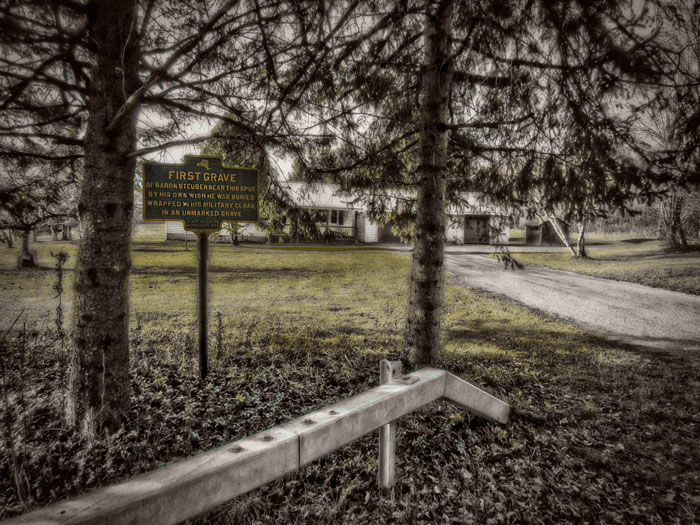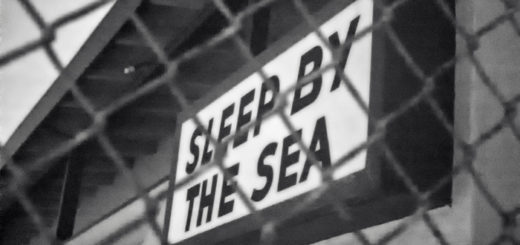Dead Reckoning
A road through the middle of nowhere can get pretty rough. This one was posted with a sign that said: “Unstable Surface, Temporary Speed Reduction, 5 MPH.” The sign was rusted but we obeyed it anyway because you just never know. Soon enough another sign appeared. It said “Historic Site This Way.” An arrow indicated the direction: Straight ahead, the way we were already headed. No going back now.
It wasn’t long before another sign appeared for the historic site, along with another arrow. Then another. And another. We lost count of how many signs and arrows we passed, but we must have been on the right track. Late in the afternoon we arrived at the historic site. What we found there was a worn-out marker close by the road. It was nearly hidden between a couple of shabby conifers at the end of somebody’s driveway. The marker said “First Grave.” As it turned out, the site was historic not because of what was there but for what was not.
Once upon a time this was the gravesite of the famed Prussian military hero Baron Friedrich Wilhelm von Steuben. He was recruited by Benjamin Franklin to help George Washington get the Continental Army into line. Things worked out: The Americans won their war against the British and Baron von Steuben, for his service, was given 16,000 forested acres in the middle of nowhere upstate New York. The baron took possession of his lands and managed to clear sixty acres before he died of a stroke one night in 1794.
His last will and testament stipulated that: “on my Decease [my executors] do not permit any person to touch my Body, not even to change the Shirt in which I shall die but that they wrap me up in my old Military Cloak and in twenty four hours after my Decease bury me in such spot as I have before my Decease pointed out to them and that they never acquaint any person with the place where I shall be buried.” As luck would have it, a few years after the baron was buried, the construction of a new road prompted his executors—a couple of old military buddies—to dig up the baron’s remains and move them to another unmarked grave deeper in the woods.
Somehow word got out as to where the new grave was located and it wasn’t long before a makeshift memorial appeared and pilgrims were flocking to the site to pay their respects. Over the years, the homespun wooden memorial became more and more shoddy, hardly a fitting remembrance for a man of such stature. It was decided by various officials that a more suitable memorial be erected. So the baron’s remains were dug up yet again and removed to a third gravesite, on top of which now sits a large stone monument to honor the “Drillmaster of the American Revolution.”
We considered trying to find our way to this grandiose monument and pay our own respects, but it was already growing dark. This first grave would have to suffice. We resumed our journey and saw no further signs.



